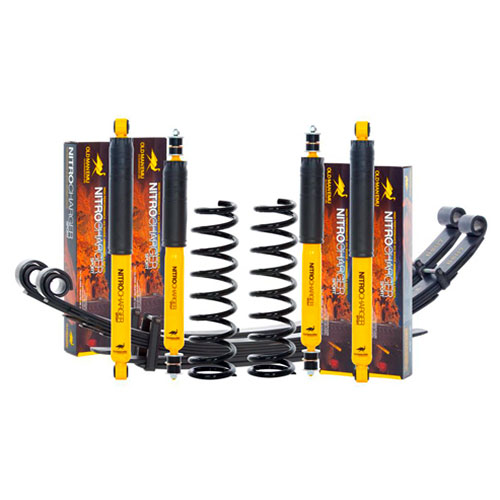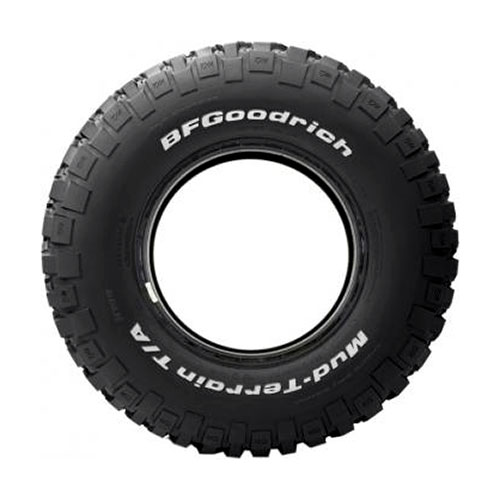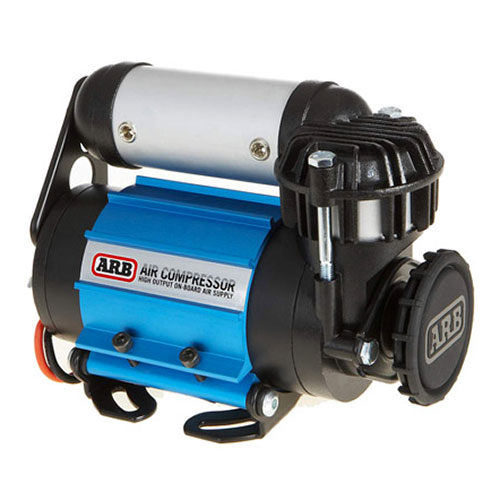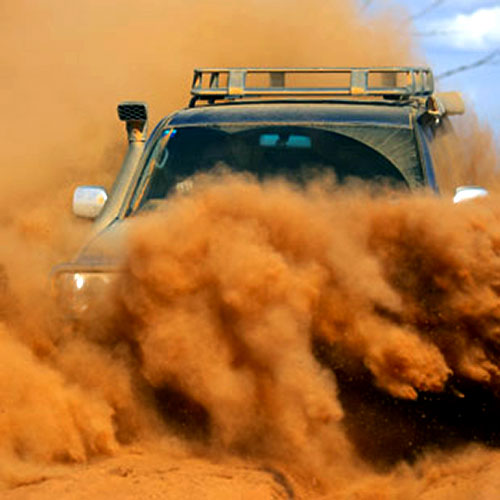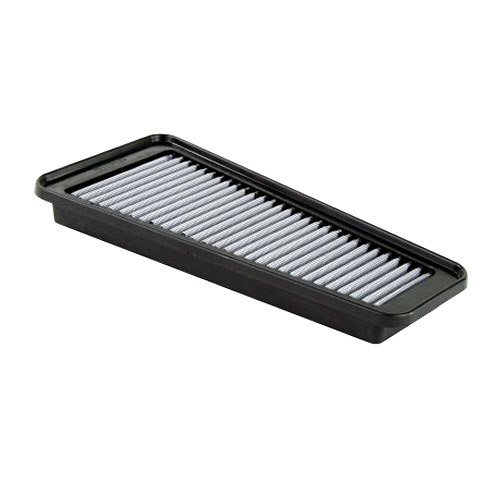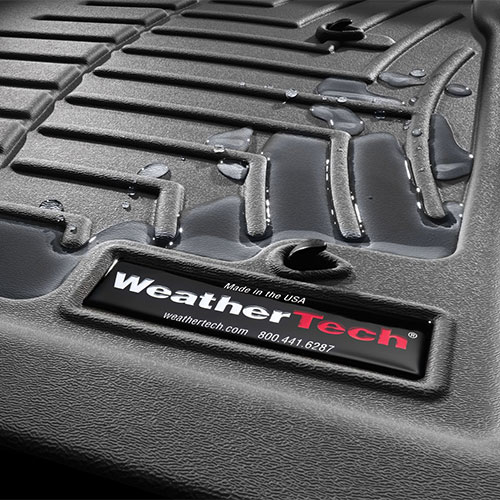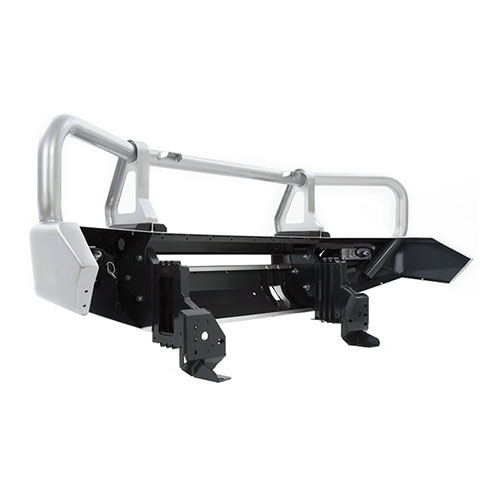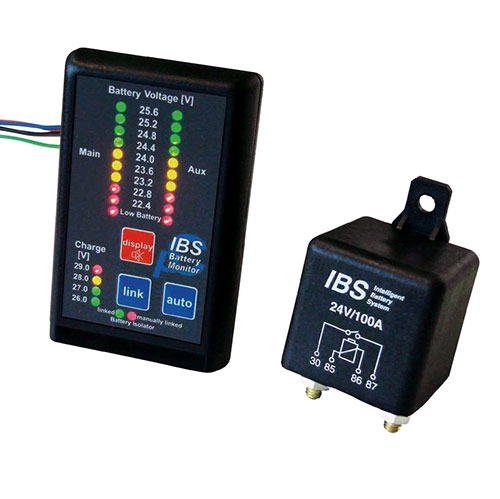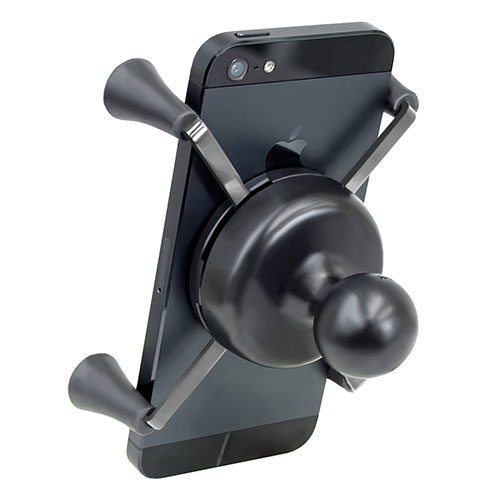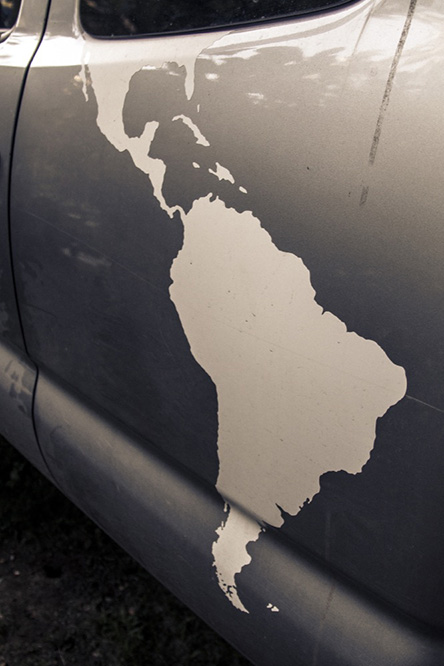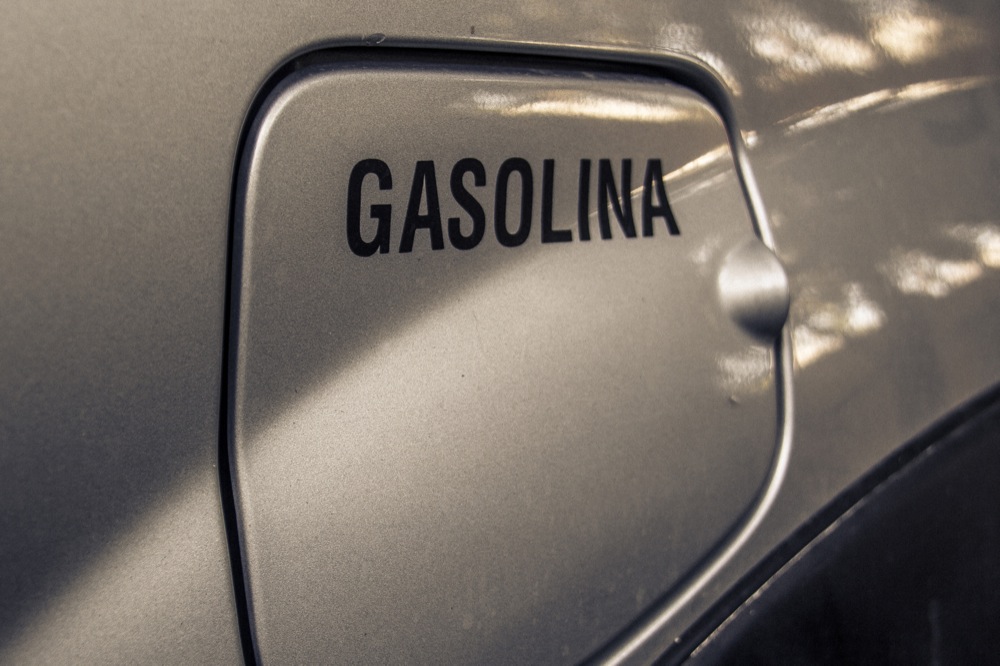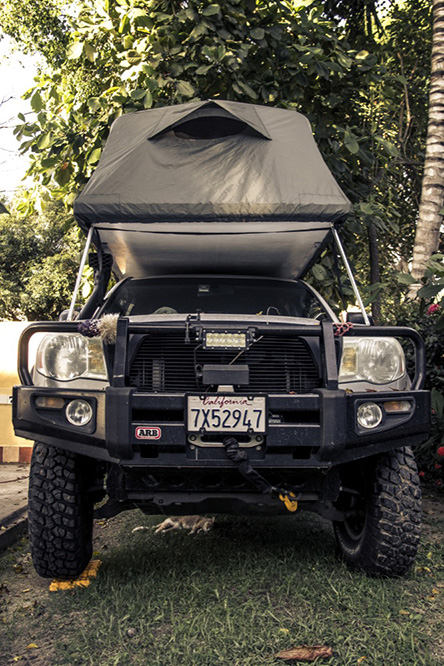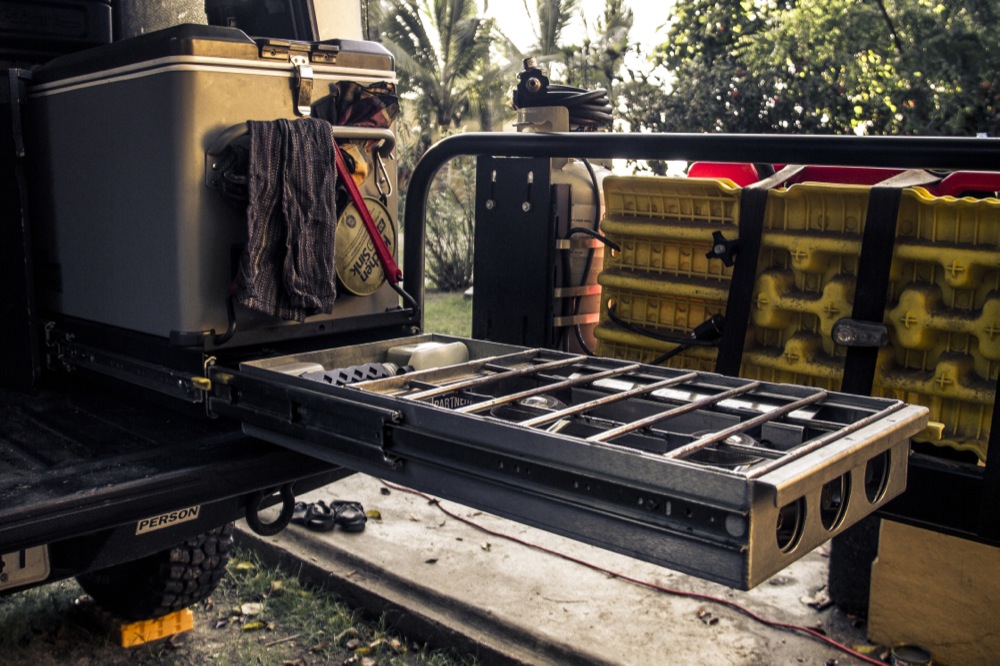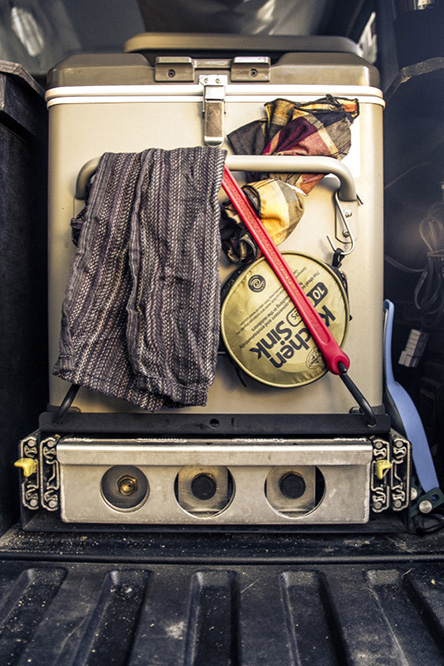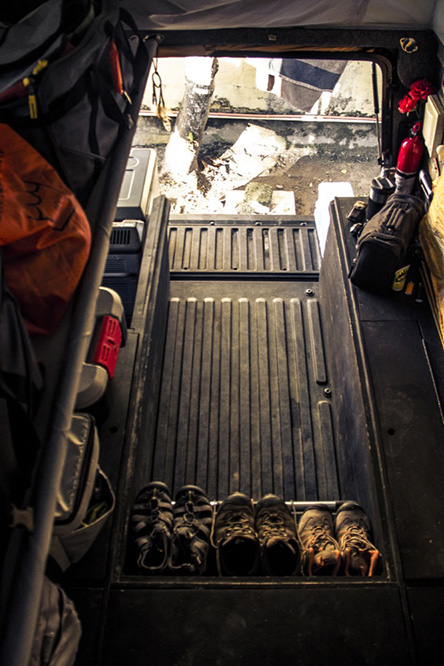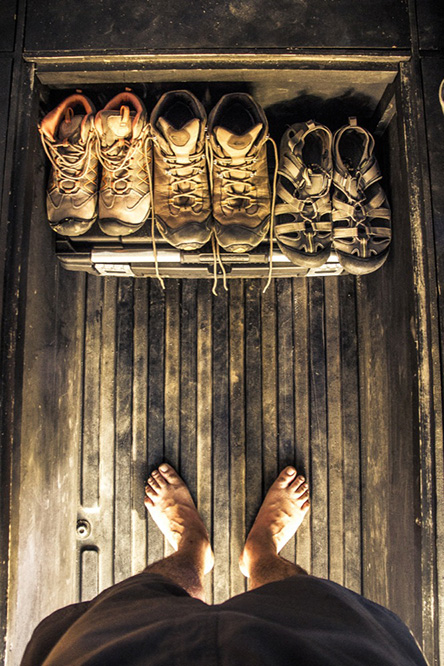How do you find the correct vehicle for an overland journey and life on the road? Bicycle, motorcycle, car, van, camper, RV? All options have their pros and cons. We love the flexibility of our own vehicle. Considering we would spend many months living on the road, we did quite a bit of research to decide which setup works for our needs and budget and which compromises we feel we can make. Our goal was having a small, flexible set up, that’s reliable and comfortable, but still affordable. This setup allows us to go off-road but also to have an office space, sleep guests, and have a dog travel with us.
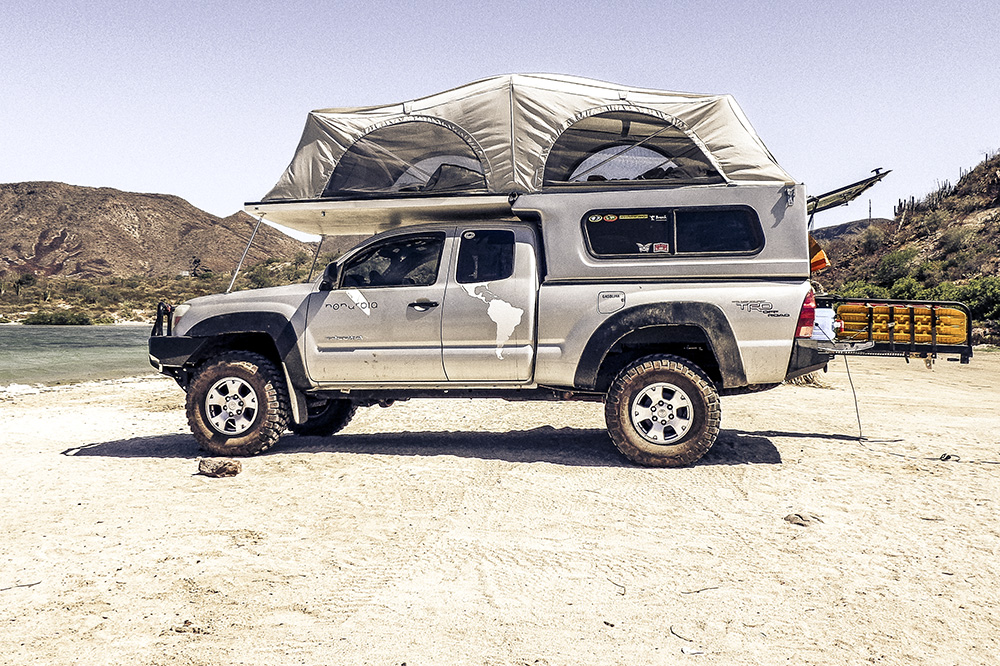
We sold both of our old cars and bought a used 2005 Toyota Tacoma truck. We were lucky enough to find a second-hand Flip-Pac camper on Craigslist, restored it, built compartments, a platform in the back and put it all together. For a road trip like this there are of course cheaper options, and many more expensive ones. We’ve seen many other travellers spending anywhere from nearly nothing to a hundred thousand dollars and more for a setup. Ours is on the lower end of budgets for trip vehicles. Nevertheless, it provides enough comfort and security, so much that we prefer it to any hostel or hotel, and we cook most of our meals. This is reflected in our trip budget. So far we’ve been averaging between 700 and 900USD a person per month depending on the country, including everything (food, gas, lodging, fees, health and car insurances). We are lucky to live in a global world that allows a digital nomadic lifestyle. Being designers, we are able to do occasional freelance work on the road, making this journey fairly sustainable. We certainly couldn’t live this cheaply in Los Angeles and have so much freedom!
Here is how we built our moving tiny house…
VEHICLE
The TRD Off-Road edition Tacoma is a capable and reliable truck to start with. Considering ours already had more than 100K miles on the odometer on the day of the purchase, we went through a few basic replacements such as the water pump, harmonic balancer seal, serpentine belt, clutch pedal slave and cabin air filter. Timing is chain driven on these models so that will never be a concern. We replaced all fluids and greased all chassis points.
Next in line was upgrading the suspensions to ARB Old Man Emu‘s with Dakar Leaf Springs to increase clearance and travel. Skinny tall tires from BF Goodrich Mud Terrain series in combination with an onboard air compressor allowed us to deflate even more air on rough roads and dirt. This, we found, is the best remedy for unforgiving road surfaces. We haven’t had any punctures or traction issues so far. Noise and fuel consumption difference was almost unnoticeable.
A Safari snorkel and washable air filter increased clean, dust-free cool air flow to the engine while giving us a little extra comfort in river crossings. Large floor mats and window deflectors from Weathertech helps with keeping the interior dry and fresh.
We also fitted an ARB Bullbar to avoid a possible trip interruption in case of collision with livestock on the road. The Bullbar also enabled us to mount a winch and an extra led light to the front. A deep-cycle auxiliary battery and battery management system ensures we don’t drain the main battery inside the engine compartment. This battery can also be connected to a trickle charger when an electrical outlet is available. An aftermarket tailgate locking mechanism connected to the wiring of the passenger door makes it easy to lock the rear end. We’ve also added two LED reading lamps to the sleeping area. Inside the cabin, a hard mounted X-Grip Ram mount holds our smart phone vibration free. The smart-phone also serves as a navigation via the Garmin Bluetooth GPS Extender and music source connected to the factory audio system via the GTA Car Kit. We can control tracks and volume with hard buttons without playing around too much with the phone screen.
LIVING SPACE
From the beginning we knew that we wanted to keep all our belongings below a deck covering the surface of our truck bed. The structure of this construction would need to keep all our stuff organised, out of sight, while also providing a platform to sleep on in addition to the rooftop tent.

We designed it on Google Sketch-Up and built it using plywood, piano hinges and truck bed coating. Additionally, the cover of the middle section is designed to slide out and can be converted into a table by screwing on adjustable table legs. In “full-camp mode” everything in the middle aisle can be stowed away, freeing the corridor and increasing our living space.
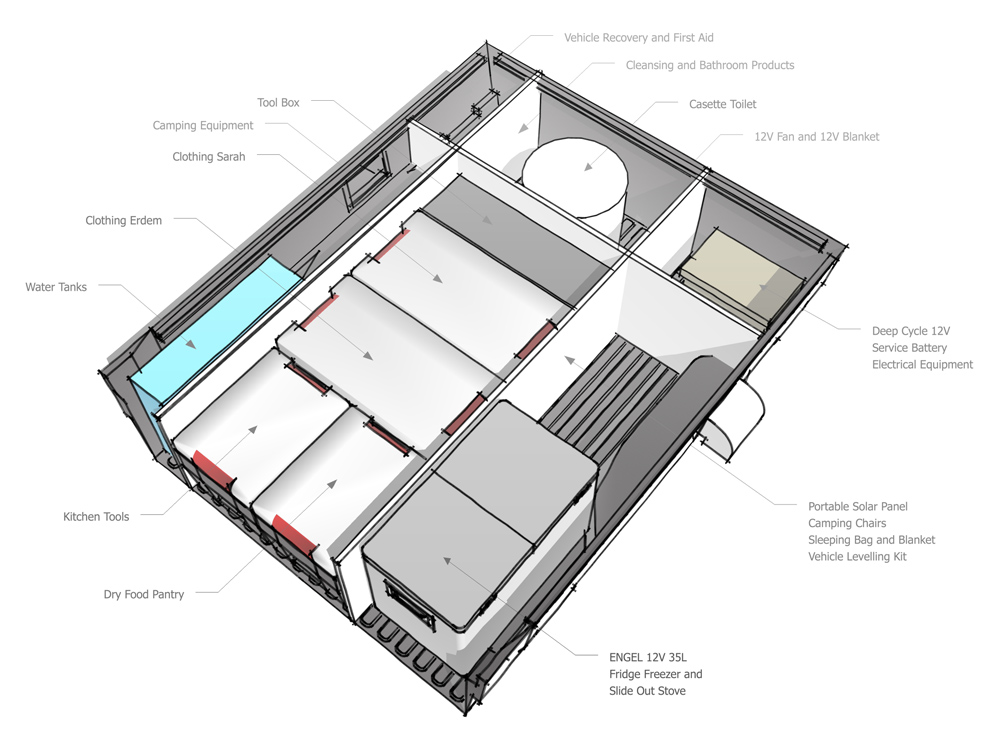
EXTERNAL STORAGE
A disadvantage of Flippac is that we cannot have a roof-rack. This makes carrying dangerous, dirty and oversize things difficult. After debating for a long time we designed a custom swing arm and steel bumper and had it manufactured by Brute Force Fabrications. The bumper definitely paid for itself in a rear-end collision in Mexico City. The gasoline and LPG tank are stored outside the living space and above the height of most cars in traffic. This setup also hosts heavy and large recovery tools such as the TRED traction boards and High-Lift jack. The two canvas back packs attached to the swing-arm allow us to keep plastic bags and carry our trash outside the truck.
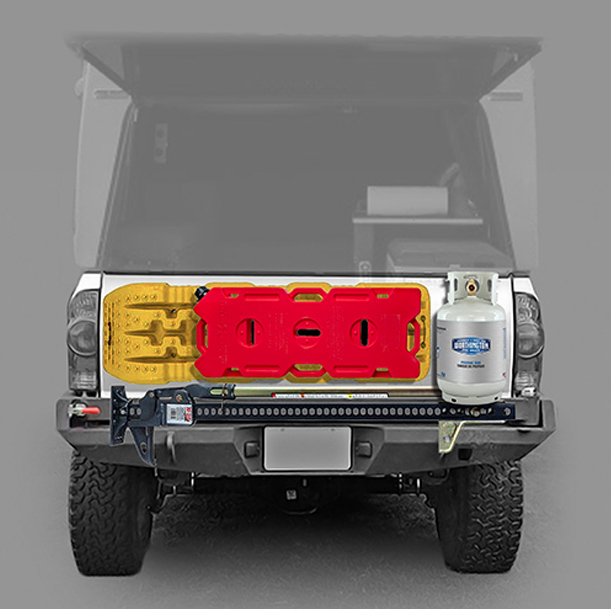
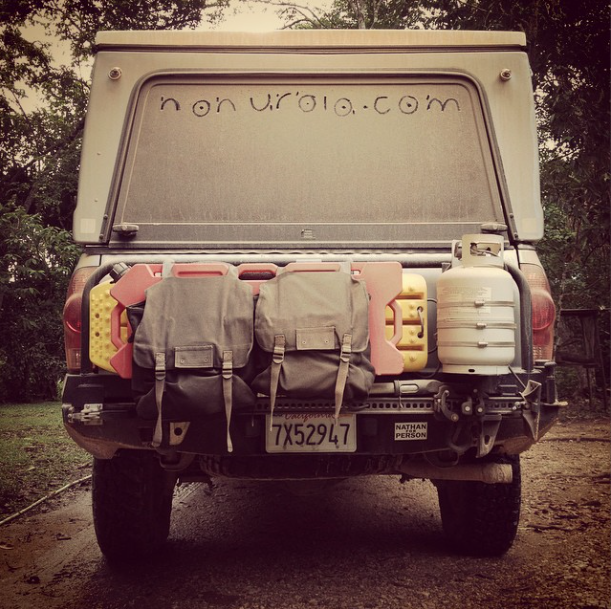
EQUIPMENT
Water
Our water storage is enough for about three days of drinking, cooking, dishwashing and cleansing. We like that the bricks are individually portable and we usually stock them up by buying big water jugs at the supermarket, or filtering tap water.
— Sawyer 3-Way Inline Water Filter
— WaterBricks Three containers with 3.5 gallons each, which gives us 10.5 gallons (~38 liters)
— Steripen Adventure (to sterilise small amounts of water, only used it occasionally so far)
Food
— MT35 Engel Fridge Freezer with Slide-out Stove Combo (With the addition of a home-made aluminum wind cover, we are very happy with this fridge-stove combination. We cook almost all of our meals and the fridge space has been enough.)
— 11 lb Worthington Propane Tank (Lasts us about two months cooking two to three times a day. Throughout North and Central America refilling has not been an issue.)
— Kitchen Tools
• Plastic Pot Scraper (saves a lot of time and water.)
• Hand Spray Bottle with water+detergent (Our dishwashing machine, saves water.)
• 2.7L Halulite Pressure Cooker (to save energy.)
• Milk Frother (for a foamy ice coffee.)
• Hand Blender (for shakes and soups – works with the factory plug in the Tacoma truck bed.)
• Toaster (Foldable round stove-top toaster)
• Foldable Kitchen Sink
• Stackable Pot and Plate Set
• Sporks
• Utensil Set
• Can Opener
• Wooden Spoon
• Tongs
• Spatula
• Small Tea Kettle
• Dutch Press for Coffee and Tea
• Small Thermos
• Drinking Bottles
• Insulated Drinking Cups
• Small Bowls
• Grater
• Small Baking Sheet (Fits on the stove.)
• Various Containers with Sealable Lids
• Kitchen Towels
• Serving Spoon
• Plastic Egg Container
Sleep
We have three options for sleeping arrangements depending on the situation. The roof-top tent is our preferred and most common method. The camper deck is free of any clutter and can be used as a sleeping platform when the weather is stormy or too cold. It’s also a great place for our guests. Finally, a standalone tent when we need to sleep away from the truck.
— Flip-Pac Camper with Latex Mattress (no mold, good with heat)
— Mosquito Net (A life saver. Wish we got a no-seeums-net.)
— AT Flippac Rainfly (Sadly this “rain” cover is only waterproof by California standards. We had to work a lot on seam-sealing and coating the fabric to make it anywhere near usable.)
— MSR Hubba Hubba Tent
— Bed Sheets
— Two Person Sleeping Bag
— Blanket
— Hot Water Bottle
— Two Thermarest Blowup Mattresses
— 12V Heating Pad (when it’s too cold. Usually we prefer our “analog” hot water bottle)
— 12V Fan (when it’s too hot.)
Outdoor
— 2 GCI Outdoor Camping Chairs (We love these because they fold down radically small for a full-size campaign chair. The plastic joints broke after some use, but we found a fix.)
— 2 Flex Lite Chairs (We normally use these as office chairs inside the camper.)
— Kelty Car Tarp
— Stackable Levelling Blocks (very useful!)
— Adjustable Table Legs (They screw on to the removable center platform of the deck to create a table for 6!)
— Blue Tarp (serves as a surface to fix things on the ground or a privacy screen.)
— Axe (A must for coconut hunting.)
— Picnic Blanket
— Hand Broom
— Foldable Stepping Stool (The back of the car is high. This is very helpful!)
Hygiene
— Toilet Bucket
— Medical Urinal (A life-saver if you don’t feel like going outside at night.)
— 12V Camping Shower
— Travel Hair Dryer
— Hangable Toiletry Bags (with personal toiletry items.)
Medical
— Skin Ointments
— Wound care (Gauzes, Bandaids, etc.)
— Anti-fungal Cream
— Anti-allergy Medicine
— Stingeze
— Sunburn Ointments
— Anti-diarrhea Pills
— Anti-constipation Pills
— Motion Sickness Pills
— Snake-bite Kit
— Ibuprofen Pain Killer
— Antibiotic Pills
— Oral Hydration
— Alcohol
— Thermometer
— Eye-drops
Safety
— Fire Extinguisher (Legally required in some countries.)
— Safety Triangle (Same as above.)
— Lockable Gas Cap
— Spare Tire Locking Cable
— Keyed Lug-nuts
— Wire—lock (for items attached to the swing-arm.)
— Other (Disclosure would beat the purpose.)
Vehicle Recovery
So far, we used almost all of these, but only to help out others, which is nice.
— ARB Puncture Repair Kit
— Foldable Shovel
Toolbox
— Socket Set with various adapters
— Spark Plug Puller
— Combination Wrenches
— Adjustable Wrench
— Metric Allen Key Set (Full Size)
— SAE Allen Key Set (Folding)
— Replaceable Bit Screwdriver
— Stubby Screwdrivers
— Channel Lock Pliers
— Needle Nose Pliers
— Side Cutter
— Scissors
— Tin Snips
— Hemostats
— Files
— Chisel
— Adjustable Hacksaw
— Box Cutter
— Precision Cutter
— Radiator-Hose Pick
— Multimeter
— Electrical Wires
— Solder and Iron
— Measuring Tape
— Steel Wire
— Electrical Tape
— Duct Tape
— Tape
— Zip-Ties
Electric
— Deep-cycle Service Battery (runs our fridge, interior lights, and allows us to charge appliances like phones, cameras, and laptops.)
— Portable 65 Watt Solar Panel (Enough to delay the power-depletion for a day or two when we’re off the grid. We would need more if we wanted to depend on it, but this helps. We had to replace the factory cable with a much thicker one to get better usage.)
— 12V Trickle Battery Charger
— Intelligent Battery System
— Extension Cables
— Solar Flash Light
— Headlamps
— Lanterns
Electronic
— Bear Extender (Extends the WiFi reception capacity of your laptop. Very helpful in many situations.)
— Canon EOS 60D DSLR Camera
— Camera Slider
— MacBook Pro Laptops
— Wacom Tablets
— External Hard Drives
— iPad
— GoPro
— Canon Selphy Printer
— Fuji Instax Camera
— iPhone (In combination with Skobbler offline GPS app.)
— Garmin Bluetooth GPS Receiver (Extending the GPS antenna strength of the iPhone)
— Spot Tracker (We’ll always know where our truck is. It also helps our loved ones to locate our movements.)
Luggage
— Mountainsmith Clothing Bags
— ActionPacker 8 gal. (stores all our kitchen tools.)
— Cooler (for storing dry-goods.)
— Electronic Cases (with foam inserts for every gadget a digital nomad needs.)
— Laundry Bags
— Small Snack Box Cooler (kept inside the cabin.)
— First Aid Case
— Travel Document Organizers
— Folder for Document Copies
— Toiletry Bags
— Mini Foldable Backpack
— Backpack with Hydration pack

